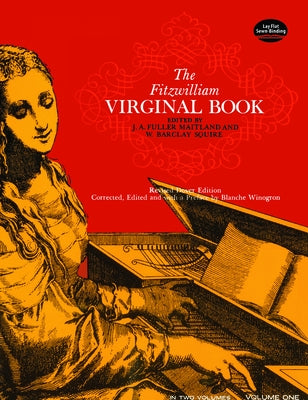Before you leave...
Take 20% off your first order
20% off
Enter the code below at checkout to get 20% off your first order
Discover summer reading lists for all ages & interests!
Find Your Next Read

The Fitzwilliam Virginal Book is "the most remarkable, and in many respects the most valuable collection of Elizabethan keyboard music," according to Grove's Dictionary of Music and Musicians. Of unknown origins, the previously scarce collector's item is now available at popular prices for the first time. The pieces herein, while composed for the virginal, can be played without difficulty on piano or any other keyboard instrument.
The nearly 300 airs, variations, fantasies, toccatas, pavanes, galliards, allemandes, and courantes in these two volumes include some of the finest examples of Elizabethan and Jacobean music: compositions by Thomas Morley, Orlando Gibbons, Giles Farnaby, Thomas Warrock, Ferdinando Richardson, Peter Phillips, Thomas Tompkins, and practically every other composer of the virginalistic school. John Bull and William Byrd, two of England's greatest composers, are represented by over 100 works.
J. A. Fuller Maitland and W. Barclay Squire set the music into modern notation, preserving faithfully the intent of the composers. The peculiarities of the original notation, time signatures, fingering, and the like as well as the ecclesiastical modes and accidentals employed by the composers are explained in a lucid introduction, which also discusses the history of the manuscript, the individuals connected with it, the composers, and the structure of the virginal.
For this extensively revised and corrected Dover edition, Blanche Winogron, noted musicologist and performer, undertook a thorough critical reexamination of the 1899 Maitland Squire edition by closely comparing it to a copy of the original manuscript (the original is in the Fitzwilliam Museum in Cambridge, England) from which it was transcribed. Numerous minor errors, misprints, and misinterpretations in the Maitland/Squire transcription have been corrected, resulting in a new edition closer to the original than ever before.
The period of this music was one of transition from the older principles and systems of notation to modern theories. This, then, is a most important document for musicologists and others interested in the history of music. But it is also a source of delight, allowing for countless hours at the keyboard for all lovers of good music.
Thanks for subscribing!
This email has been registered!
Take 20% off your first order
Enter the code below at checkout to get 20% off your first order